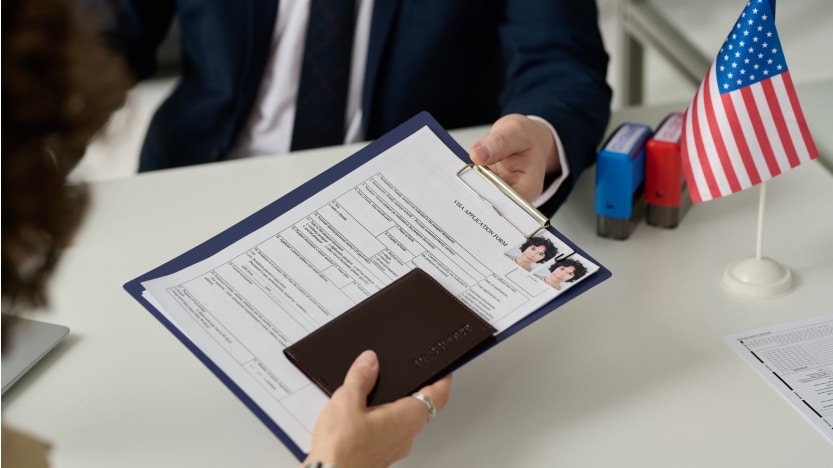When shipping packages internationally, attaching the correct customs documents is essential to ensure smooth and timely delivery. Customs documents provide essential information to customs officers about the contents, value, and purpose of your shipment. This guide will walk you through the process of attaching customs documents, making it simple and easy to understand.
Why Are Customs Documents Important?
Customs documents are required by the customs authorities of the destination country to:
- Determine the contents of the package.
- Assess the value of the goods.
- Calculate any applicable duties and taxes.
- Ensure that prohibited or restricted items are not being shipped.
Without the proper customs documents, your package can be delayed, returned, or even confiscated by customs authorities.
What Customs Documents Are Needed?
The specific customs documents required can vary depending on the destination country and the nature of the goods being shipped. However, some common documents include:
Commercial Invoice
This document provides details about the goods being shipped, including a description, quantity, value, and the sender and recipient’s information.
Customs Declaration Form
This form declares the contents of the package and its value. It is usually required for all international shipments.
Certificate of Origin
This document certifies the country where the goods were manufactured. It is often required for trade agreements and to determine duties.
Packing List
This document lists all the items included in the shipment. It helps customs officers verify the contents of the package.
Pro Forma Invoice
Similar to a commercial invoice, this document is used for goods being shipped as a gift or for non-commercial purposes.
Other Specific Documents
Depending on the goods, you might need additional documents such as import licenses, health certificates, or inspection certificates.
How to Prepare Customs Documents
Preparing customs documents is a necessary step in international shipping. Accurate and complete documentation ensures your package moves smoothly through customs, avoiding delays and additional costs. Here’s a step-by-step guide
- Gather Information: Collect all the necessary information about your shipment, including item descriptions, quantities, values, and the details of the sender and recipient.
- Fill Out the Forms: Accurately complete all the required customs forms. Be honest and precise in your descriptions and valuations.
- Print Multiple Copies: It’s a good idea to print at least three copies of each customs document. This ensures you have enough copies for customs authorities and as a backup in case one gets lost during transit.
- Keep an Extra Copy Inside: Place an extra copy of the customs documents inside the package. This is helpful in case the external documents are damaged or lost during shipping.
How to Attach Customs Documents to the Package
Attaching customs documents properly to your package is essential for smooth international shipping. Securely fastening these documents ensures customs officers can easily access and review them. Follow these steps:
- Use a Document Pouch: The best way to attach customs documents is by using a “documents enclosed” pouch. These pouches are designed to be securely attached to the outside of the package.
- Clear Plastic Wallet or Envelope: If you don’t have a document pouch, a clear plastic wallet or envelope can also work. Ensure it is securely taped to the package.
- Standard Envelope: As a last resort, you can use a standard envelope. Tape it down well and label it “Customs” to make it clear to customs officers. Make sure it doesn’t cover any barcodes or important information on the shipping label.
- Secure the Documents: Ensure the documents are securely fastened to the package so they don’t move or get lost during transit. Use strong tape and cover the entire document pouch or envelope.
- Visibility: Attach the customs documents in a visible and accessible location on the package. Typically, the side of the box is a good spot, as it is easily accessible for customs officers.
Consequences of Not Attaching Customs Documents
Failing to attach the proper customs documents can lead to several issues, including:
- Delays: Without the necessary documents, customs authorities may hold your package, causing significant delays.
- Returns: The package may be returned to the sender if the required documents are not provided.
- Additional Costs: You might incur additional costs for storage, handling, or return shipping if the package is held or returned.
- Confiscation: In some cases, the package might be confiscated by customs if it is suspected of containing prohibited or restricted items.
Tips for a Smooth Customs Process
- Double-Check Information: Ensure all information on the customs documents is accurate and complete. Mistakes can lead to delays and additional scrutiny.
- Know the Rules: Familiarize yourself with the customs regulations of the destination country. Each country has its own rules and requirements.
- Contact Information: Provide accurate and up-to-date contact information for both the sender and recipient. This helps customs authorities get in touch if there are any issues.
- Be Clear and Honest: Clearly describe the contents of your package and be honest about their value. Misleading information can lead to fines or confiscation.
- Use Professional Help: If you’re unsure about the customs process, consider seeking help from a professional shipping service or customs broker. They can provide guidance and ensure all documents are correctly prepared.
Closing Thoughts
Attaching customs documents correctly is a vital part of international shipping. You can ensure your package passes through customs smoothly and reaches its destination without unnecessary delays or complications by following the steps outlined in this guide. Prepare all necessary documents, secure them properly to your package, and provide accurate information. With these precautions, your international shipping experience can be hassle-free and efficient.
FAQs
What are customs documents?
Customs documents provide details about the package contents, value, and purpose, helping customs authorities assess duties and ensure compliance with regulations.
2. Why do I need multiple copies of customs documents?
Having multiple copies ensures there are backups if documents are lost or damaged during transit and facilitate customs clearance at different checkpoints.
3. Where can I get customs forms?
Customs forms can be downloaded from your shipping service’s website, such as SFL Worldwide or obtained directly from postal offices and customs authorities.
4. What happens if my customs documents are incomplete?
Incomplete customs documents can lead to delays, additional fees, or the return of your package. Customs authorities need complete information to process shipments.
5. Can I use any envelope to attach customs documents?
Yes, but it’s best to use a clear plastic wallet or “documents enclosed” pouch. Ensure it’s securely taped and doesn’t obstruct shipping labels or barcodes.
6. How can I avoid customs delays?
Ensure all information is accurate, complete, and clearly visible. Familiarize yourself with the destination country’s customs regulations and provide correct contact details.
7. Do all international shipments require customs documents?
Yes, all international shipments need customs documents to declare contents, value, and purpose, facilitating smooth customs clearance and compliance with regulations.

I’m Tammy Waller, a supply chain and logistics specialist with over 10 years of expertise. I’ve been an author and SFL employee for over 10 years.
As an author, I’ve been able to teach others. I love guiding users through supply chain and logistics operations.
I have substantial experience managing logistics operations, supply chain management, transportation, inventory management, and warehousing in shipping-moving and logistic services. I’ve worked on many worldwide logistics and supply chain projects, honing my abilities in negotiating rates, scheduling shipments, and managing vendors.



